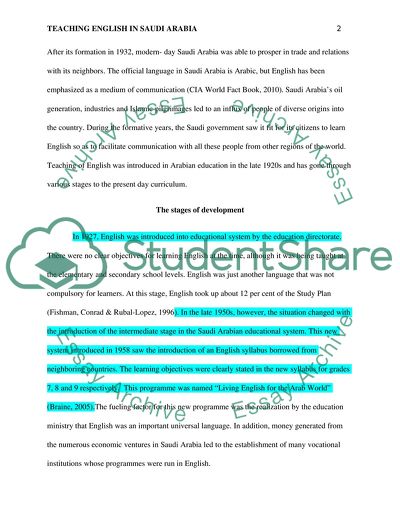Cite this document
(Teaching English in Saudi Arabia Case Study Example | Topics and Well Written Essays - 1500 words, n.d.)
Teaching English in Saudi Arabia Case Study Example | Topics and Well Written Essays - 1500 words. https://studentshare.org/english/1777367-issue-teaching-english-in-saudi-arabia
Teaching English in Saudi Arabia Case Study Example | Topics and Well Written Essays - 1500 words. https://studentshare.org/english/1777367-issue-teaching-english-in-saudi-arabia
(Teaching English in Saudi Arabia Case Study Example | Topics and Well Written Essays - 1500 Words)
Teaching English in Saudi Arabia Case Study Example | Topics and Well Written Essays - 1500 Words. https://studentshare.org/english/1777367-issue-teaching-english-in-saudi-arabia.
Teaching English in Saudi Arabia Case Study Example | Topics and Well Written Essays - 1500 Words. https://studentshare.org/english/1777367-issue-teaching-english-in-saudi-arabia.
“Teaching English in Saudi Arabia Case Study Example | Topics and Well Written Essays - 1500 Words”. https://studentshare.org/english/1777367-issue-teaching-english-in-saudi-arabia.


